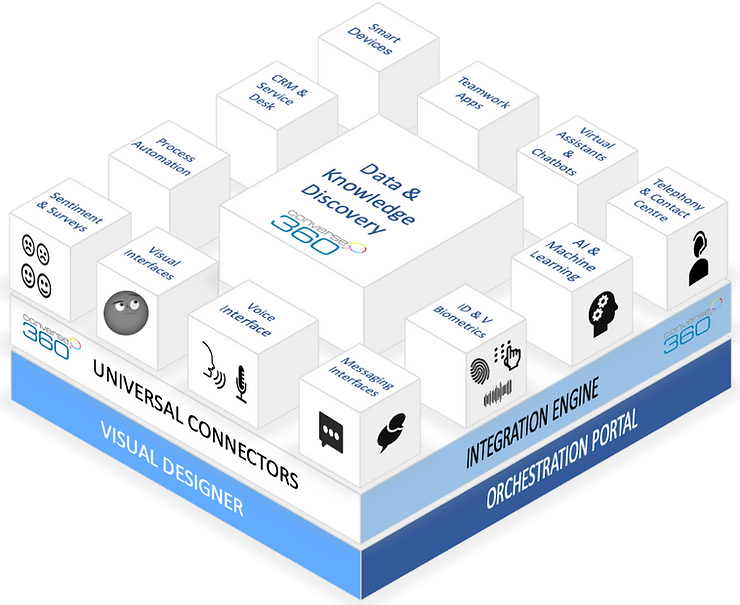
The cost to serve customers with traditional methods is high and often doesn't meet their demands; and yet customers are demanding better, faster and more effortless experiences than ever before. Throwing more customer service advisors at the problem isn't cost effective. Delivering a great service at anytime of day or night to a host of different channels is challenging. So how do you begin to replicate your best advisors whilst delivering a 24/7 service? It isn't easy but the latest technology including machine learning, speech-to-text/text-to-speech, deep learning, analytics, chatbots, voice assistants and natural language understanding, can play a vital role in bridging the gap.
Humans are Complex
Humans are complicated creatures, and it is difficult enough for other humans to understand them sometimes let alone for machines! Human communication is subtle, nuanced and very complex and this is what makes it so difficult to recreate humans artificially.
By introducing the right technology you can begin to offer instant and personalised responses 24/7 on your customers channel of choice, that can handle complex enquiries and tasks. The challenge is choosing carefully and ensuring it doesn't become yet another siloed system!
There are very few solutions available that do it well because of the complexity involved in replicating your best customer advisors digitally!
Getting the Technology and User Experience right
Over the years we have seen a number of automation technologies used to try and offer a service that is convenient for the customer, intuitive to use and provides relevant information or transactions. From telephone IVR's, web portals and apps through to more recently Chatbots, Speech Assistants, Intelligent Virtual Agents and Digital Humans they rely on understanding what a person is typing, clicking or saying to trigger a response. Many of these services may have led to cost reductions for the business but they weren't always loved by customers.
With the advent of cloud technology, Artificial Intelligence and pay-as-you-consume pricing models, the advances being made are transformational and the price is affordable to almost every business.
For humans to have conversations with machines a combination of technologies is required. Conversational AI is a sub-section of AI that bridges the gap between human and computer language and makes two-way communications more natural without having to use specific words or phrases. The intelligence comes from the systems learning all the different ways that customers communicate their request, thereby understanding the requests better and improving the responses offered.
Conversational AI
Conversational AI uses many different natural language principles including Natural Language Processing (NLP), Natural Language Understanding (NLU) and Natural Language Generation (NLG) enabling them to mimic human conversation. Chatbots use this to identify underlying intent when a real person types or speaks, so they can deliver a response appropriate to that intent. Each interaction enables chatbots with NLP to learn and improve their responses.
Whilst conversational AI can understand general conversation very well there will be projects that require specific domain knowledge, have conversations with complex or unusual acronyms, references or alpha numeric details that are almost impossible to understand, even when trained. Even humans struggle to hear things correctly and have to ask you to repeat it (think postcodes - 'Did you say LM1 4VP or LN1 4EB?'). This is where integrating precision speech with conversational AI enables you to use speech for far more complex enquiries and tune the model to understand what is being asked for.
Natural Language Interactive Voice Response (IVR)
The original Interactive Voice Response systems (IVR) are widely used for making payments or taking bookings. They were expensive to set up, had restrictive menu options and relied on pressing buttons and following scripted flows. Second generation IVR's are more widely known as voice assistants and offer a much better user experience and allow the user to communicate in a natural way. Using Natural Language, customers communicate though voice rather than typed text. Automatic Speech Recognition (ASR) technology and artificial intelligence determine what question is being asked and respond with the most relevant answer. To improve the recognition levels over time you can choose to let the AI train itself or use the customer service team to manually choose which training phrases to add.
The chatbot’s reply can be delivered in several ways such as written text, voice with text using Text to Speech (TTS) tools, and it can offer more comprehensive responses such as completing a task and updating back-end systems.
With digital first platforms, Natural Language can be used to triage enquiries and make decisions on which enquiries get automated and whether to hand-off to an agent based on the customer profile, their requirements, circumstances or past outcomes.
Authenticating Your Customer (ID & V)
When customers ask for information that is personal to them they will need to verify who they are before the system reveals any confidential information. This will usually involve typing a user name, password or providing some personal details. If you are using a voice based service this brings different challenges as a speech based service cannot recognise unusual names, email addresses, capitals vs lower case or keypad characters.
Voice authentication enables you to confirm a customer’s identity based on their voice. A voice is unique as a fingerprint, with a combination of characteristics such as dialect, pitch and speed. Voice authentication can't be hacked like passwords, making it an extremely secure method of authentication.
After a system has a customer’s voiceprint, the chatbot can offer the customer a better experience when they call customer service. The system can recognize and authenticate identity, enabling the customer to access self-service tasks without having to reveal or remember passwords.
Building a Knowledge Base
AI-powered self-service applications continuously learn and improve their responses based on how customers interact with them. However, they do initially need the input to learn from. Some providers can provide accelerator packs with specific domain or industry knowledge, providing a useful shortcut.
When the queries are more complex and answers are not contained in a single knowledgebase, AI technology can access content in documents, external knowledge bases, databases, product manuals, and from business applications such as CRM, Service Desk, HR systems, databases or industry specific systems.
A real-time dynamic look-up may be appropriate in some cases where content is constantly changing, whereas some answers may be contained in documents such as PDFs, Excel tables, or PowerPoint, where less frequent updates are typical and where it is more challenging for traditional search technology.
Contact Centre and Teamwork Apps
There will always be situations where a live advisor will be able to support your customer better than any technology can. But live advisors cannot always be instantly available 24/7, during peak times across every channel. This is where blending automation and live interactions can deliver the best experience. What you definitely need is integration into your existing contact center platform or Teamwork app rather than using another silo'd live chat system. This enables you to choose exactly when to engage your customer service team, using rules or exceptions that are consistent and presenting the conversation history to the agent to negate any repeated information. Advisors are using familiar applications and all customer records are recorded in one place.
Chatbots and Speech Assistants that utilise conversational AI and seamlessly integrate to business applications provide an invaluable tool to enable organisations to offer a better customer experience, 24 hours a day, 7 days a week by resolving enquiries and completing tasks, often without the need for a live agent.
If you are interested to see how a chatbot or Speech Assistant can make conversational AI work for you and improve your customer experience contact us contact us or call us on 0333 6000 360.
More blogs
converse360 Launches Live Chat
November 27, 2025







